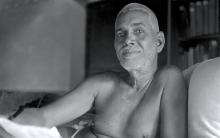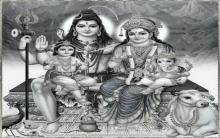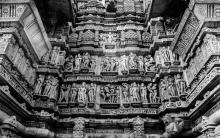This is a short glossary of some of the technical terms often seen in Hindu literature. A glossary such as this becomes inevitable on most occasions since many of these terms don't have single word equivalents in English or any non-Indic language, since these concepts are often not found in other cultures.
artha • wealth; motive; cause. It refers to the material objectives and accomplishments of a person. One of the four puruṣārthas.
ātman • soul; spirit; the inner, higher Self of an individual.










